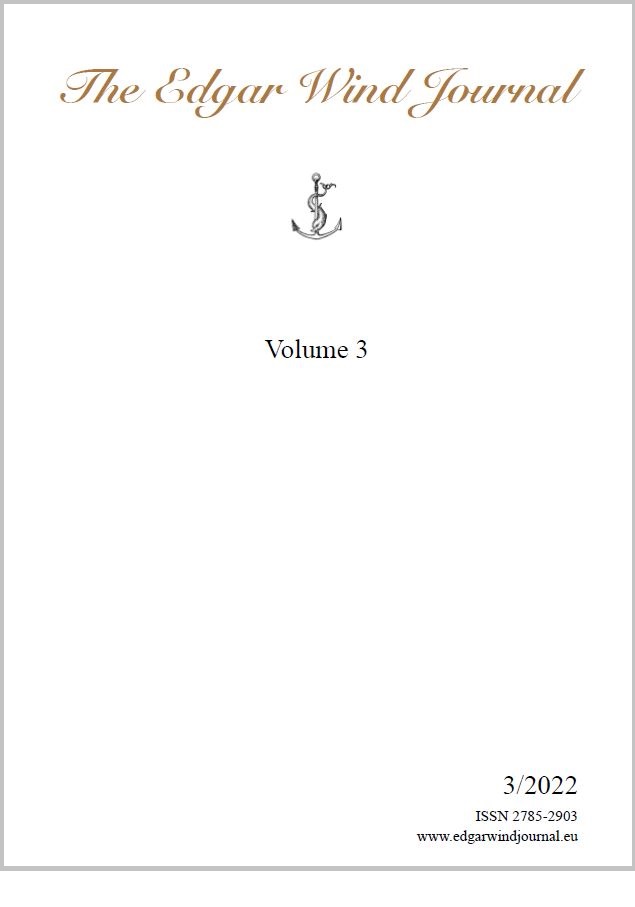Stefano Farinelli Independent Scholar

Abstract
Within Edgar Wind’s collection of studies devoted to Michelangelo and published posthumously in
The Religious Symbolism of Michelangelo (2000), we aim to focus on the analysis of one of his brief
sketches, whose subject is the marble relief of the Battle of the Centaurs, Casa Buonarroti, Florence.
The intent of this paper is to propose a possible conclusion to the ideas that Wind, unfortunately,
suggests only in a fragmented and incomplete form. The dense – and still open – historiographical
debate on the meaning and subject of the famous relief that Michelangelo sculpted during his
youth, following the close suggestion of Agnolo Poliziano (anglicised as ‘Politian’), can thus benefit
from the original perspective of Wind, who, using Ovid’s Metamorphoses as a guide, alludes to an
unusual ‘romantic affection’ toward the ferocious centaurs that would be mysteriously represented
in the artwork. In particular, women and adolescents appear to rebel against their ‘rescue’ by men
so that they might remain in the arms of the centaurs, who would be the only creatures capable of
par amor – that is, just and equitable love – as evidenced by the tragic story of Cyllarus and
Hilonome. The extraordinary beauty of Cyllarus as described by Ovid, which Michelangelo
reproduces in the strangely canonical and harmonious proportions of the centaurs of his relief,
may also allude to homosexual love – a theme to which the controversial Politian dedicated a
number of his poems.
Keywords
Centauromachy; Edgar Wind; Michelangelo; Ovid; Politian
Bibliography
Bocchi, Francesco, Bellezze della città di Fiorenza (Florence, 1591).
Borghini, Raffaello, Il riposo (Florence: Marescotti, 1584).
Condivi, Ascanio, Vita di Michelagnolo Buonarroti, ed. by Giovanni Nencioni (Florence: SPES, 1998).
DeBrohun, Jeri Blair, ‘Centaurs in Love and War. Cyllarus and Hylonome in Ovid’s Metamorphoses 12.393-428’, American Journal of Philology, CXXV, 3 (2004), pp. 417–452.
Del Bravo, Carlo, ‘La bellezza nei Duchi di Michelangelo’, Artista (2002), pp. 172–183.
Dempsey, Charles, ‘Angelo Poliziano and Michelangelo’s Battle of the Centaurs’, Mitteilungen des KunsthistorischesInsitutes in Florenz, LXII (2020), pp. 158–179.
De Tolnay, Charles, The Youth of Michelangelo, 2nd edn rev. (Princeton, NJ: Princeton University Press, 1947).
Frey, Karl, Michelagniolos Jugendjahre (Berlin: K. Curtius, 1907).
Justi, Carl, Michelangelo. Neue Beiträgezur Erklärung seiner Werk (Berlin: Grote, 1909).
Lisner, Margrit, ‘Form und Sinngehalt von Michelangelos Kentaurenschlacht mit Notizien zu Bertoldo di Giovanni’, Mitteilungen des Kunsthistorischen Institutes in Florenz, XXIV (1980), pp. 299–344.
Plutarch, The Parallel Lives, trans. by Bernadotte Perrin (Cambridge, MA: Loeb Classical Library, 1914).
Poliziano, Agnolo, Prose volgari inedite e poesie latine e greche edite e inedite, ed. by Isidoro Del Lungo (Florence: G. Barbera, 1867).
Publius Ovidius Naso, Metamorphoses, ed. by Piero Bernardini Mazzolla (Turin: Einaudi, 2015).
Strzygowski, Josef, ‘Studien zu Michelangelo’s Jugendentwickelung’, Jahrbuch der Königlich Preußischen Kunstsammlungen, XII (1891), pp. 207–219.
Thode, Henry, Michelangelo: KritischeUntersuchungenüber seine Werke (Berlin, 1908).
Varchi, Benedetto, Orazione funerale […] fatta […] nell’essequie di Michelagnolo Buonarroti […](Florence: Giunti, 1564).
Vasari, Giorgio, La vita di Michelangelo nelle redazioni del 1550 e 1568, ed. by Paola Barocchi (Milan: Ricciardi, 1962).
Weinberger, Martin, Michelangelo the Sculptor (London: Routledge & Kegan Paul, 1967).
Wickhoff, Franz, ‘Die Antike im Bildungsgange Michelangelos’, Mitteilungen des Institutes für Österreichische Geschichtsforschung, III (1882), pp. 408–435.
Wind, Edgar, Pagan Mysteries of the Renaissance (London: Faber and Faber, 1958).
Wind, Edgar, The Religious Symbolism of Michelangelo, ed. by Elisabeth Sears (Oxford: Oxford University Press, 2000).
The Edgar Wind Journal 3: 36-46, 2022
DOI: 10.53245/EWJ-000015
Copyright: © 2022 S. Farinelli. This is an open access, peer-reviewed article published by Bernardino Branca